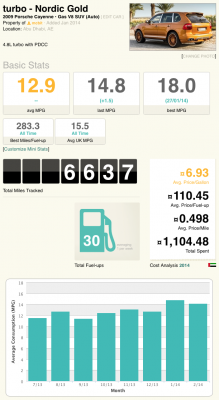Welcome to RennTech.org Community, Guest
There are many great features available to you once you register at RennTech.org
You are free to view posts here, but you must log in to reply to existing posts, or to start your own new topic. Like most online communities, there are costs involved to maintain a site like this - so we encourage our members to donate. All donations go to the costs operating and maintaining this site. We prefer that guests take part in our community and we offer a lot in return to those willing to join our corner of the Porsche world. This site is 99 percent member supported (less than 1 percent comes from advertising) - so please consider an annual donation to keep this site running.
Here are some of the features available - once you register at RennTech.org
- View Classified Ads
- DIY Tutorials
- Porsche TSB Listings (limited)
- VIN Decoder
- Special Offers
-
OBD II P-Codes - Paint Codes
- Registry
- Videos System
- View Reviews
- and get rid of this welcome message
It takes just a few minutes to register, and it's FREE
Contributing Members also get these additional benefits:
(you become a Contributing Member by donating money to the operation of this site)
- No ads - advertisements are removed
- Access the Contributors Only Forum
- Contributing Members Only Downloads
- Send attachments with PMs
- All image/file storage limits are substantially increased for all Contributing Members
- Option Codes Lookup
- VIN Option Lookups (limited)
-
Posts
143 -
Joined
-
Last visited
-
Days Won
1
Content Type
Profiles
Events
Forums
External Paint Colors
Downloads
Tutorials
Links Directory
Collections
Store
Posts posted by mcbit500
-
-
My rear deck fan will start up, not immediately but, up to about 15-20 mins after shutting the engine down and may run for 5 -10 mins. I'm in very high ambient temperatures though.
-
Is the car a 2006 CttS? There was no 2008 turbo S and the standard tyres on the 2009 turbo S were 295/35-21.
From the choices above, I'd probably opt for the Pirellis, as I tyre I prefer the Michelin Latitude Sports, but I don't believe that they are available in your size.
-
-
I wasn't questioning your methodology, I was merely stating that I would not base a diagnosis on a single reading which is why i have 100% confidence in the results I received. Fact is that during the test, hot engine at idle, the readings were consistently 13.6V and 12.3V and the alternator will maintain a constant voltage for minutes at a time. This a simple test from an easily accessible point which has three fundamental outcomes which can immediately point to the area which needs further investigation.
-
To measure voltage drop across a cable, the best is to probe the two end points in question and read the relative voltage drop directly in a single measurement, as opposed to taking two separate absolute measurements from a third common point and then do the subtraction. The reason is each absolute measurement is affected by the load (current) so if the load changes between the two measurements, the subtraction will create errors.
To test the ground strap, all you need to do is to probe the alternator casing and the chassis (e.g., the brass bolt on the airbox) and the measurement should read 0.1v or less.
There is more than one way to skin a cat. :)
I would never advocate basing a diagnosis on a single reading; you can repeat the same test about 5 times in a minute and if the values measured are consistent then the test is reliable. The results from the OPs test on the jump terminal, tell him that the earth is OK and that the voltage is either low at the alternator or that the voltage drop is in the cable between the alternator and the jump terminal.
-
Mine did this and it was a very easily and cheaply fixed selector issue.
-
It would appear that 158 51 is the US version and 158 31 was fitted to European/ ROW cars from 2005 onwards. I don't what the physical differences are but lighting is one of the areas where US cars often differ from ROW.
US PET
955 631 158 51 headlamp /R 1 I8JD
I8JD
Main headlights with gas-discharge lamps U.S. version, XENON RHDEuropean Pet
955 631 158 31 headlamp /R 05- 1 I8BC
I8BC
Main headlights with gas-discharge lamps + direction indicators, XENON, right-hand traffic
-
 1
1
-
-
Before my engine was rebuilt I had the low voltage issue, so while the engine was out I had the voltage regulator and earth strap as a preemptive attempt at a cheap cure. When the engine went back in I still had the issue, so one after another every HD cable in the starter / charging circuit was changed including the front to rear ones; no result, voltage was still low. Completely frustrated I decided to take a look myself. Taking the easy route first, with the engine hot and on load I measured the voltage across the battery directly and then from the +ve terminal to the chassis, both were exactly the same. Moving to the engine bay I measured from the +ve jumper terminal to the engine (13.6V) and then from the jumper terminal to chassis (12.3V) and concluded that the earth strap was faulty. Took the car back to the shop and demonstrated my findings and they said that they had actually checked the earth connections and found that the connections were good. They agreed to test the car using the earth strap from another car in the shop which worked just fine; the shiny new Porsche original earth strap on my car was faulty.
A temporary fix was made using a (not very well made up) earth strap from a local electrical shop; I ordered a heavier duty, marine quality, ground strap online and this is what is now fitted to the car.
As Ahsai says above, just because it is new or looks OK, don't ignore it when checking.
-
Good to hear that, I hope you're now enjoying the turbo!
-
Did you also solve the oil pressure issue?
-
-
This, along with the short inner harness, has been an issue on all of the Cayennes I have seen here in the middle east.
-
Local Porsche dealer had to obtain a code from Germany when I had mine fitted.
-
You may have a different issue, but the most common cause of this problem is covered here http://www.renntech.org/forums/topic/31161-brake-booster-faulty/
-
That would be it!
It's so **** dorky, but I just love reading this stuff. Just in the quick browse of the engine booklet, I now get why my coolant fluctuates between high noon and just past noon when I have the HVAC system completely shut off - even in relatively cool ambient temps. I would be idling in 60 degree weather with the HVAC system totally shut off and watch the coolant slowly rise, fans kick on, coolant goes down, fans shut off, rinse and repeat. But, everything was rock steady with the AC on. Searching the issue revealed plenty of posts stating "it's normal," and "it's not normal." Well, now I know it's designed to work that way. Most cars smooth out the engine coolant temp to prevent the unsuspecting driver from freaking out, but I'm glad to see Porsche didn't do that.
I also had no idea the alternator was liquid cooled. This site rocks!
Fact is that the Porsche did do that, and the temps are smoothed out. Between 69C and 97C mine (or either of the other 2 that I've scanned) does not move from the central 80C Norm mark.
-
You have an expensive car that takes expensive tires. I wouldn't chance it with my life or my families life going cheap. I would pretty much guarantee you they don't meet Porsche Specs and probably don't even meet DOT specs.
I'm with you!
-
A friend of mine who owns my old 2005 CTT has just had the reservoir fail. Car is a 201k ams on original coolant pipes. Total cost at ARM AED 1200.00
-
I could only guess that you first had an issue which hydrolocked a cylinder whilst under power and the extreme force was transferred to the crankshaft which in turn cracked the crankcase.
-
 1
1
-
-
I think it needs a new motor unit unless you can strip it and repair the plastic gear drive. Not a particularly unusual problem, the plastics become brittle with age.
-
-
-
-
I ran my 09 GTS with DRL on for 3 years with no issues; my current turbo has the auto position so no DRL.
-
I know that DLR cannot be de-activated in Canada, don't know about Europe. Perhaps it can be done PIWIS or Durametric?











X50 Exhaust Tips vs Standard 996tt Exhaust Tips
in 996 TT, 996 TT S, 996 GT2
Posted
The 2 in 1 tips are option X54, purely cosmetic.